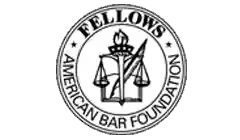Attorneys Kevin Lee and Alan Fuchsberg of the Jacob Fuchsberg Law Firm represent a mother of five who unfortunately passed away due to her physician’s failure to timely diagnose a small bowel obstruction. Although both the death certificate and autopsy report list a small bowl obstruction as the cause of death, defendants sought to prevent the autopsy report from being presented as evidence in trial by filing a motion in limine, arguing that opinions expressed in autopsy reports are inadmissible hearsay.
Attorney Kevin Lee successfully opposed the defense’s motion, enabling the autopsy report to be admitted as evidence in trial.
Our Client’s Story – Undiagnosed Small Bowel Obstruction
Over the span of a couple of months, our client began to experience a number of alarming symptoms including loss of appetite, vomiting, rapid weight loss to the point of malnourishment, and severe abdominal pain. Our client presented to her doctor numerous times with these life-threatening symptoms, however, her doctor failed to make a diagnosis or perform a surgical consult to rule out a small bowel obstruction.
Unfortunately, by the time the small bowel obstruction was diagnosed, our client had developed a severe infection and was too unstable to be operated on. As a result of the delay, she tragically passed away.
In a lawsuit filed against the doctor responsible for overseeing our patient, we allege that our client wrongfully passed away as a direct result of the doctor’s failure to timely and properly diagnose the intestinal obstruction. Importantly, both the death certificate and autopsy report list the primary cause of death as a small bowel obstruction, which were both presented as evidence to support our theory.
What is a Motion in Limine?
A motion in limine is a pretrial motion that seeks to exclude specific evidence or arguments from being presented in a trial. The motion is meant to address potentially prejudicial, irrelevant, or inadmissible information that could potentially sway a jury or taint the proceedings.
In medical malpractice cases, the motion is most often used to evaluate the admittance of expert testimony under the Daubert Standard, which provides a framework for judges to assess the reliability and relevance of expert testimony. Specifically, the standard allows judges to consider the methodology used in the expert’s testimony by evaluating its technique, whether it has been subject to publication and peer review, the potential error rate, any standards controlling its use, and the methodology’s acceptance.
Defense Presents Motion in Limine Regarding Autopsy Report
Autopsy reports are conducted by trained pathologists who perform a series of medical tests on a patient to note any underlying medical conditions, stress or injury, or significant medical events that may have led to a patient’s death. Following their examination, physicians produce a lengthy report detailing their findings, including a cause of death statement based on their findings.
In this case, the defendants presented a motion in limine alleging that the section of the autopsy report which includes the cause of death is “inadmissible hearsay,” arguing that the cause of death statement in the autopsy report should be redacted prior to being entered as evidence. Furthermore, the defendants argued that the cause of death statement specifically provides an “opinion” over a matter that should be decided by the jury (Welz v Commer. Travelers Mut. Acc. Assn., 266 AD 668, 668 (2d Dept 1943)).
Jacob Fuchsberg Law Firm Defeats Motion in Limine
In his memorandum of law in opposition to the motion in limine, Attorney Kevin Lee successfully argued that the autopsy report, including the cause of death statement, should be admissible in court.
Kevin Lee proved that it is well-established that physicians performing autopsy reports are competent to state their scientific opinions to the nature of injuries and their causes based on what is available in disclosed evidence or medical records (Walters v. State, 125 Misc. 2d 604, 479 N.Y.S.2d 964 (Ct. Cl. 1984)). Therefore, the cause of death statement in the autopsy report can be considered a purely medical diagnosis written by a licensed medical examiner. Kevin Lee also highlighted the fact that the defendants cited case law regarding autopsy reports made in relation to criminal cases which are held to a different set of standards than an autopsy report that states a medical diagnosis.
Interestingly, the death certificate listed the exact same cause of death as the autopsy report. However, defendants are unable to exclude the death certificate from evidence since it is protected by the public records exception and therefore admissible in court. Furthermore, courts have held that cause of death statements in death certificates are admissible and important to consider in court. Citing this redundancy, Kevin Lee argued that the same cause of death statement in the autopsy report should also be admissible.
After evaluating both sides, the Judge ruled in our favor and denied the Defendant’s motion in limine. As a result, we are able to submit the autopsy report in its entirety to be used in trial. The autopsy report is a significant piece of evidence in this case as it plays a pivotal role in allowing all parties to completely understand what conditions led to our client’s tragic passing.
FAQ

.svg)











